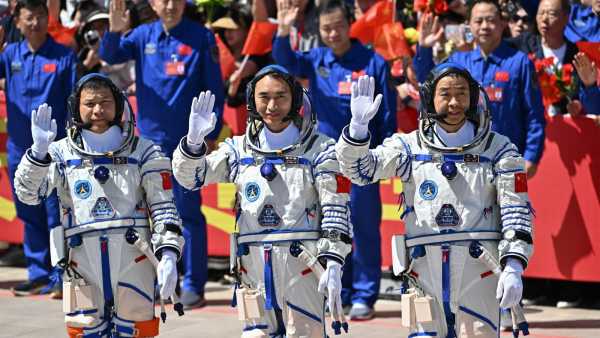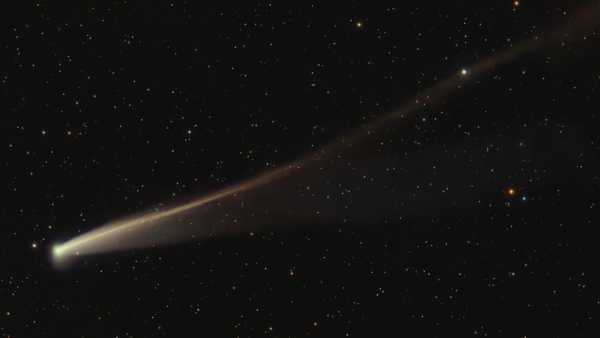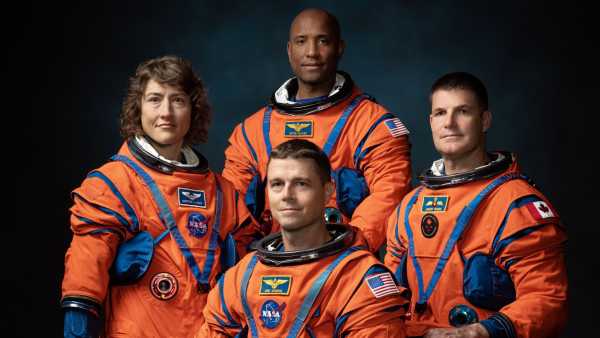
NASA's Artemis II mission crew (left to right): NASA astronauts Christina Koch, Reid Wiseman (seated), Victor Glover, and Canadian Space Agency astronaut Jeremy Hansen. (Image courtesy of NASA) Jump to:
The Artemis mega-moon launch vehicle is NASA's newest and most powerful launch vehicle, designed to return astronauts, robots, and cargo to the Moon for the first time in over 50 years. It consists of a multi-stage rocket called the Space Launch System (SLS), which can carry various additional modules, such as the Orion crew module, which will house the astronauts during the flight.
Artemis 1: On November 16, 2022, the SLS launched for the first time, lifting off from the Kennedy Space Center in Florida at 1:47 a.m. ET. After months of delays and three failed launch attempts, the rocket finally lifted off. Shortly thereafter, the Orion crew capsule separated for an uncrewed 26-day mission to the Moon and back. The capsule entered Earth's atmosphere and splashed down successfully off the coast of Baja California, Mexico, on December 11, 2022. With this, the first phase of NASA's Artemis mission, which will ultimately return humans to the Moon for the first time in more than 50 years, officially concluded.
At a press conference on September 23, 2025, NASA officials announced that the launch window for Artemis 2 could open as early as February 5, 2026, and no later than April 2026.
You may like
-
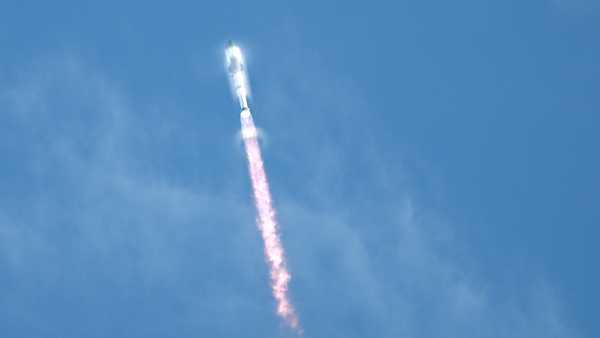
Ten times lucky! SpaceX's Starship successfully completed a test flight after a series of failures.
-
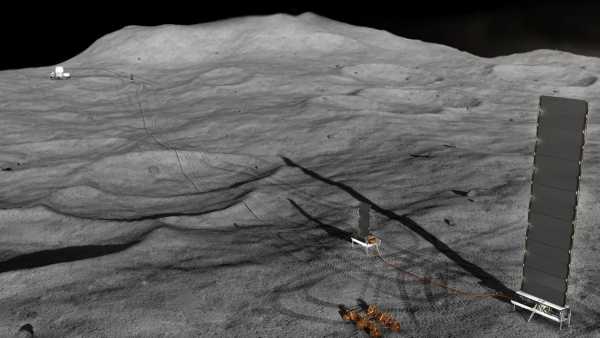
NASA plans to build a nuclear reactor on the Moon by 2030
-
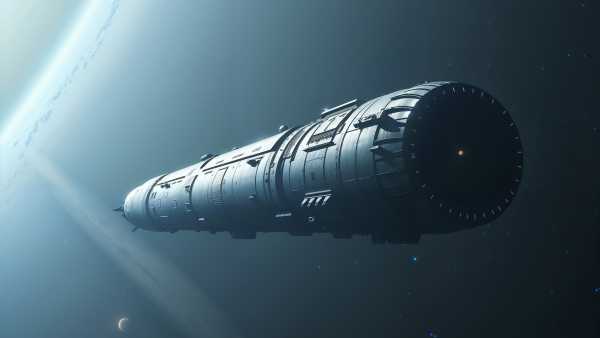
The proposed spacecraft would be able to carry up to 2,400 people one-way to the nearby Alpha Centauri star system.
What is the history of the megamoon rocket?
The SLS is an evolution of the previously planned Ares V rocket, a heavy-lift, two-stage vertical launch vehicle capable, according to NASA, of launching approximately 287,000 pounds (130,000 kg) into low Earth orbit or 143,000 pounds (65,000 kg) to the Moon. The Ares V was part of the Constellation program, an initiative launched during the George W. Bush administration that, according to the space agency, was intended to return humans to the Moon.
The Constellation project was deemed too expensive, but in 2010, President Barack Obama signed the NASA Authorization Act of 2010, directing NASA to build an Ares V-type launch vehicle called the Space Launch System, The Planetary Society reports. Although the SLS is designed for human missions, the Artemis mission, which was intended to send humans beyond low Earth orbit for the first time since 1972, has been repeatedly delayed.
What is a space launch vehicle?
The SLS is a super-heavy-lift launch vehicle capable of delivering astronauts anywhere in the solar system, including the Moon and Mars, according to NASA. It can be configured in several modifiable and increasingly powerful configurations, allowing the agency to pursue increasingly ambitious missions.
The rocket consists of a core stage over 65 meters (212 feet) tall and 8 meters (27.6 feet) in diameter. With the Orion crew module installed, the core stage will be 98 meters (322 feet) tall—taller than the Statue of Liberty—and weigh 2.6 million kilograms (5.75 million pounds). With two solid rocket boosters attached to its sides, the SLS can reach speeds of up to 40,000 km/h (24,500 mph)—fast enough to escape Earth's gravity and reach the Moon, or even conquer it.
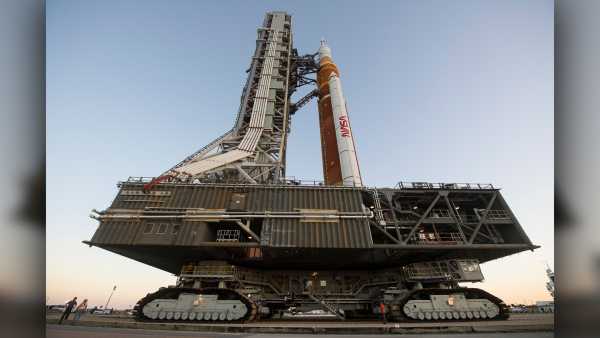
Prior to NASA's Artemis I flight test, the fully assembled and integrated SLS rocket and Orion spacecraft will undergo a dress rehearsal at Launch Complex 39B to check out systems and practice countdown procedures for the first launch.
The core stage is powered by four RS-25 engines, the same type originally used to launch the space shuttle. These engines burn liquid oxygen and liquid hydrogen and, when combined with additional solid rocket boosters, deliver 8.8 million pounds of thrust (4 million kg), exceeding the 7.8 million pounds of thrust (3.5 million kg) of the space shuttle system, according to the Houston Space Center.
According to NASA, the initial Block 1 configuration of the SLS rocket is capable of delivering a payload of 59,500 pounds (27,000 kg) to the Moon. The next configuration, Block 1B Crew, will feature a powerful upper stage that will provide the rocket with an additional 97,000 pounds (44,000 kg) of thrust, making it taller than the Saturn V rocket that carried Apollo astronauts to the Moon. Block 1B Crew can deliver a payload of 83,700 pounds (38,000 kg) to deep space, allowing researchers to deliver supplies and conduct experiments to Mars and beyond.
The most advanced configuration currently available, called Block 2, will deliver 9.5 million pounds of thrust (4.3 million kg) and be capable of lifting more than 101,400 pounds (46,000 kg) into deep space. NASA plans for the Block 2 configuration of the SLS rocket, which will stand 365 feet (111 m) tall, to be the workhorse for missions throughout the solar system.
You may like
-
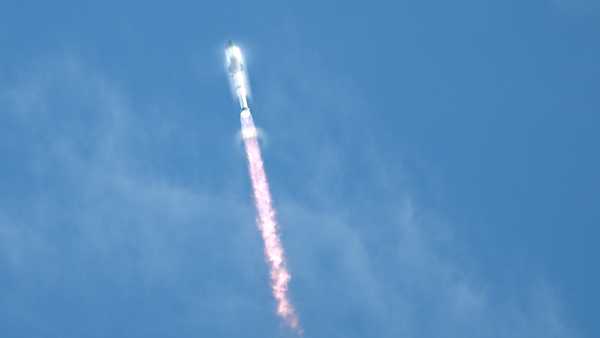
Ten times lucky! SpaceX's Starship successfully completed a test flight after a series of failures.
-
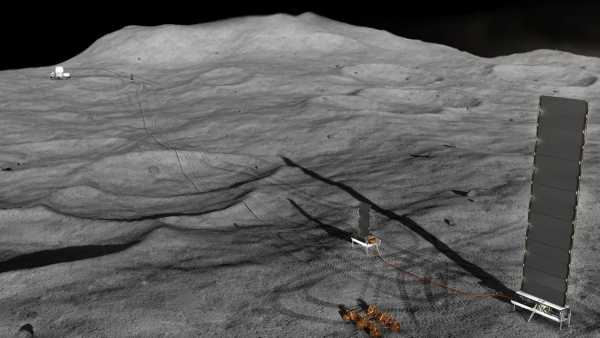
NASA plans to build a nuclear reactor on the Moon by 2030
-
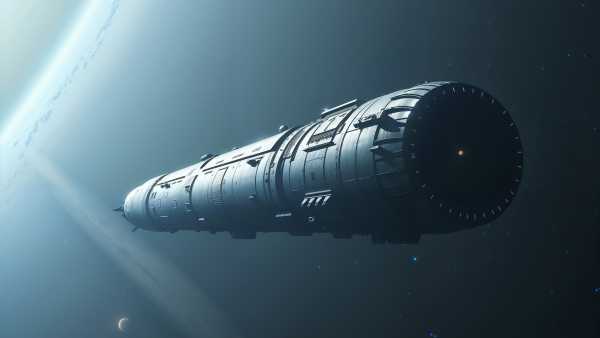
The proposed spacecraft would be able to carry up to 2,400 people one-way to the nearby Alpha Centauri star system.
What is the Orion spacecraft?
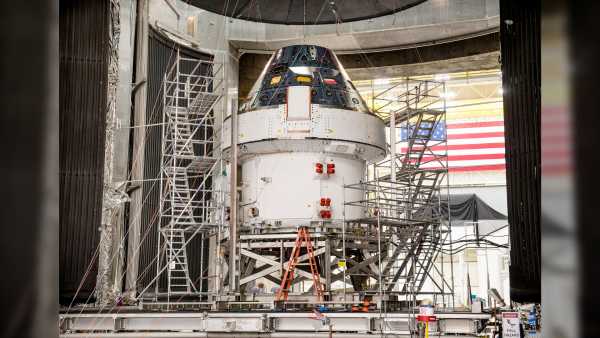
NASA's Orion spacecraft, a vital component of the Artemis 1 mission, is nearing the end of a three-month testing campaign at Plum Brook Station in Sandusky, Ohio. During the tests, the spacecraft was exposed to the extreme temperatures and electromagnetic fields it will encounter during its upcoming lunar test mission.
According to NASA, the Orion spacecraft carries the crew, life support, and power systems for four astronauts. The crew module is 11 feet (3.3 m) tall and 16.5 feet (5 m) in diameter, providing an interior volume of 316 cubic feet (9 cubic meters)—significantly more than the three Apollo astronauts had during their lunar missions, according to Space.com, a Live Science subsidiary.
According to NASA, the spacecraft is constructed primarily of aluminum alloys, and its outer layer consists of 1,300 heat-shielding silicon tiles, similar to those used in the underbelly of the space shuttle. A large heat shield is located at the bottom of the capsule to protect the crew during reentry into Earth's atmosphere. Orion will travel at an incredible 40,000 km/h (25,000 mph) and reach temperatures of 2,760 degrees Celsius (5,000 degrees Fahrenheit)—more than half that of the surface of the Sun.
The Orion capsule is equipped with four adjustable seats, drinking water dispensers, a microwave oven for heating food, exercise equipment to maintain crew fitness during flights, air filters, and a compact toilet. In the event of a dangerous solar radiation surge, the astronauts will be able to take refuge in two large lockers on the capsule's floor.
What will the megamoon rocket do?
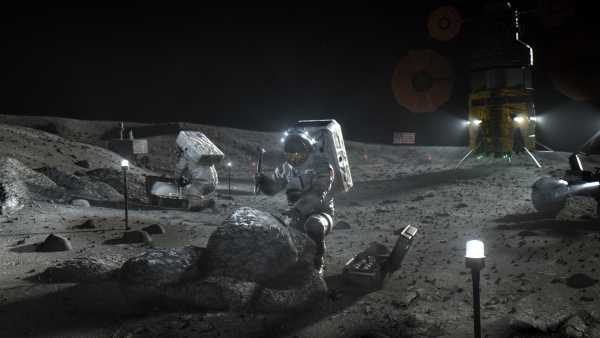
Illustration of Artemis astronauts on the Moon.
SLS and Orion are part of NASA's Artemis program, which aims to send the first woman and the first Black person to the Moon by 2027 and then establish a permanent human presence on the Moon.
In June 2022, NASA conducted a dress rehearsal for the SLS launch, during which engineers fueled the rocket and conducted a simulated countdown. The rehearsal was canceled 29 seconds before the countdown ended due to a hydrogen leak, but officials say they gained a lot of useful information from the test.
The Artemis 2 mission, scheduled for 2026, will deliver astronauts to the Moon but not land them, Space.com reports. If the mission is successful, NASA hopes to land humans on the Moon with the Artemis 3 mission.
Additional resources
- Learn all about the Artemis program on the official NASA Artemis website.
- The SLS agency page will keep you updated on events and missions involving the rocket.
- You can also watch a video about the various components of the Orion module in this YouTube video.
Editor's note: This article was updated on December 6, 2024, to include new details about the planned Artemis 2 mission. It was updated again on September 25, 2025, to include a new launch date for Artemis 2.
TOPICS NASA Space Launcher

Adam Mann, Social Link Navigation, Live Science Contributor
Adam Mann is a freelance journalist with over a decade of experience, specializing in astronomy and physics. He holds a bachelor's degree in astrophysics from the University of California, Berkeley. His work has appeared in the New Yorker, New York Times, National Geographic, Wall Street Journal, Wired, Nature, Science, and many other publications. He lives in Oakland, California, where he enjoys cycling.
With the participation of
You must verify your public display name before commenting.
Please log out and log back in. You will then be asked to enter a display name.
Exit Read more
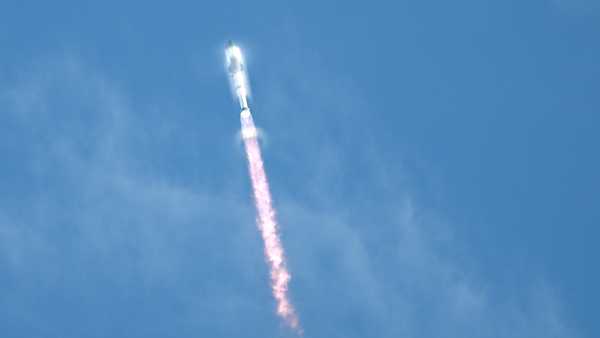
Ten times lucky! SpaceX's Starship successfully completed a test flight after a series of failures.
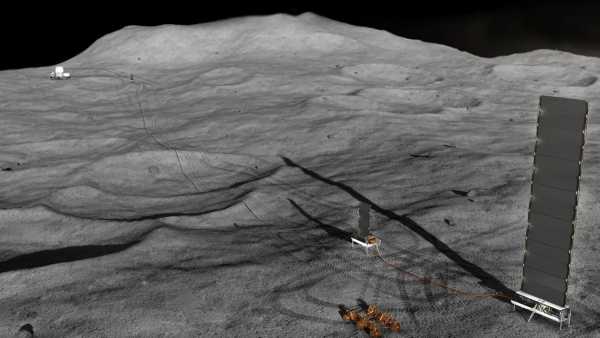
NASA plans to build a nuclear reactor on the Moon by 2030
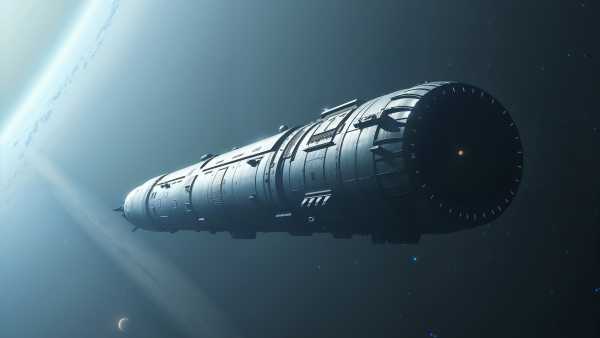
The proposed spacecraft would be able to carry up to 2,400 people one-way to the nearby Alpha Centauri star system.
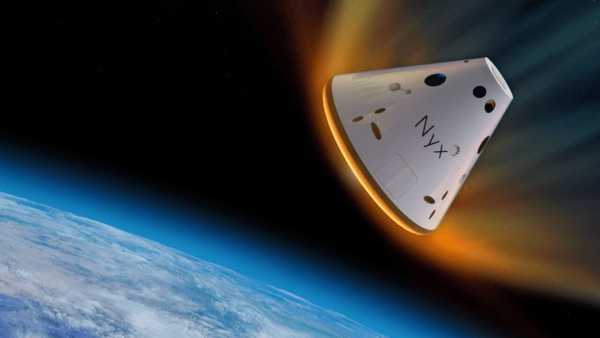
A spacecraft carrying cannabis and human remains crashed into the ocean.
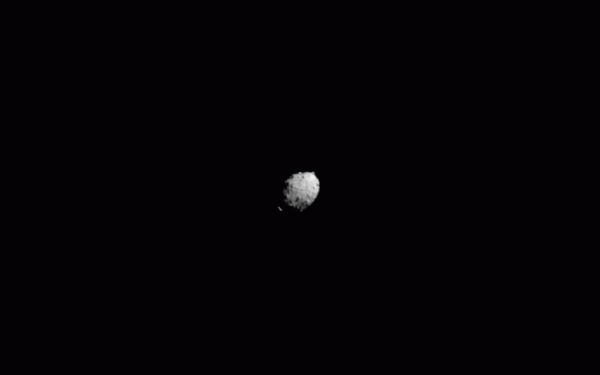
Science Story: DART, humanity's first asteroid deflection mission, hits space rock in the face – September 26, 2022
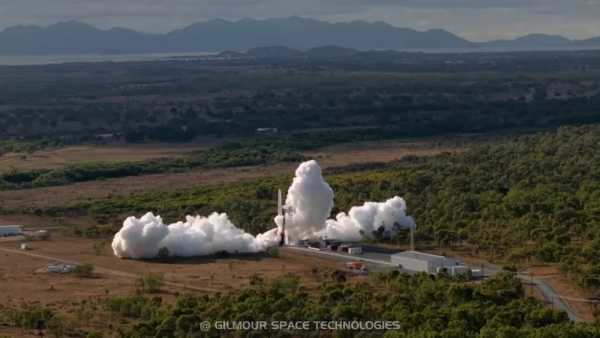
After a 54-year wait, Australia's first attempt to launch an orbital rocket crashed 14 seconds after liftoff.
Latest news on the Moon

Tomorrow you can see a rare triple conjunction of the Moon, Venus and Regulus.

Blood Moon Gallery: Stunning images from yesterday's total lunar eclipse
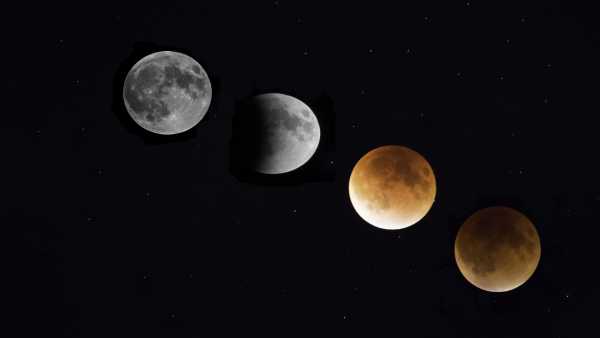
Who will see the total lunar eclipse “blood moon” this weekend?
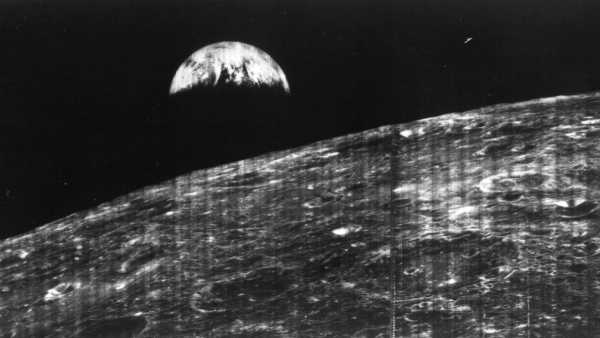
The world's first view of Earth from the Moon — Space Photo of the Week

This week, a full Corn Moon will rise, bringing a “blood moon” lunar eclipse to much of the world.

How to Stream Sunday's Total Lunar Eclipse
Last on the bibliography

Genetics: How do we inherit traits from our ancestors?

Aging: What happens to the body as it ages?

Hadrian's Wall: A defensive Roman wall that protected Britain's border for 300 years.

Dementia: What are the signs and symptoms of dementia and how is it treated?

Nine Best Places to Observe the Night Sky with Binoculars: August through November 2025
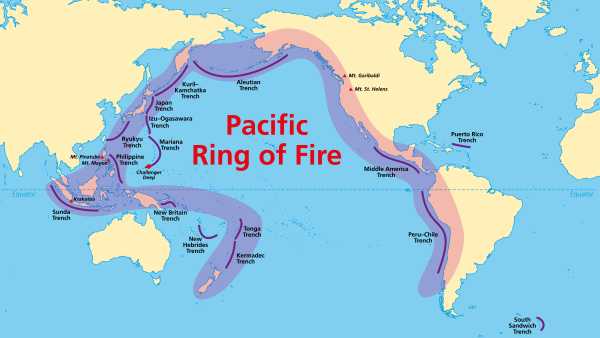
What is the Pacific Ring of Fire?
LATEST ARTICLES

1Rare wampum beads discovered in the 17th-century colony of Newfoundland
Live Science magazine is part of Future US Inc., an international media group and leading digital publisher. Visit our corporate website.
- About Us
- Contact Future experts
- Terms and Conditions
- Privacy Policy
- Cookie Policy
- Accessibility Statement
- Advertise with us
- Web notifications
- Career
- Editorial standards
- How to present history to us
© Future US, Inc. Full 7th Floor, 130 West 42nd Street, New York, NY 10036.
var dfp_config = { “site_platform”: “vanilla”, “keywords”: “van_sticky_side_nav,type_other,serversidehawk,videoarticle,van-enable-adviser-
Sourse: www.livescience.com


